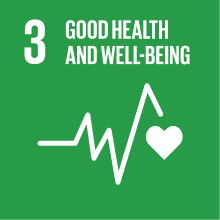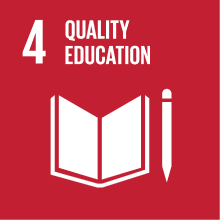PHOENICIAN-PUNIC ARCHAEOLOGY II
- Academic year
- 2025/2026 Syllabus of previous years
- Official course title
- ARCHEOLOGIA FENICIO-PUNICA II
- Course code
- FT0523 (AF:577672 AR:325851)
- Teaching language
- Italian
- Modality
- Blended (on campus and online classes)
- ECTS credits
- 6 out of 12 of PHOENICIAN-PUNIC ARCHAEOLOGY
- Degree level
- Bachelor's Degree Programme
- Academic Discipline
- L-OR/06
- Period
- 2nd Term
- Moodle
- Go to Moodle page
Contribution of the course to the overall degree programme goals
The course provides a solid historical, cultural, and methodological foundation in the field of Mediterranean archaeology. It aims to develop advanced knowledge of Phoenician and Punic civilization, with particular emphasis on its expansion in the western Mediterranean and its interactions with contemporary cultures of the ancient world. It also fosters critical analysis and interpretation of archaeological contexts, equipping students with valuable skills for fieldwork and material culture studies, in line with the overall learning objectives of the degree program.
Students from other degree programs or with specific learning needs who wish to explore the course topics more deeply are welcome and encouraged to contact the instructor to agree on the most suitable methods of attendance and study.
The course is connected to the research and excavation project at the tophet of Bithia (Chia, Domus de Maria – Southern Sardinia), which has been active since 2021 under the direction of Professors Alessandra Gilibert and Stefano Floris. For more information about the project and participation opportunities, please refer to the “Further Information” section or contact the instructors directly.
Expected learning outcomes
[Knowledge and understanding]
• understand and correctly use basic archaeological terminology;
• identify the main geographical coordinates of the ancient Mediterranean;
• outline the chronological and historical developments of the Mediterranean between the beginning of Phoenician colonization and the destruction of Carthage (9th–2nd century BCE);
• understand the key milestones in the historiography of Phoenician-Punic archaeology;
• identify the main sources and theoretical models used in the analysis of Phoenician and Punic sacred and funerary contexts;
• recognize, describe, and contextualize the essential elements of Phoenician-Punic material culture, architecture, and urbanism;
[Applying knowledge and understanding]
• correctly use basic archaeological terminology, particularly that specific to Phoenician studies;
• locate the main archaeological sites of the central and western Mediterranean;
• identify significant architectural complexes and artifacts discussed during lectures;
• correctly assign Phoenician and Punic material culture expressions to their chronological context;
• identify appropriate methods of analysis based on research objectives and the available sources;
[Making judgments]
• independently formulate and argue interpretative hypotheses regarding topics, contexts, and materials related to Phoenician-Punic archaeology;
• express critical judgments on scholarly literature;
[Communication skills]
• describe, analyze, and discuss the topics studied during the course using appropriate terminology and in a respectful way;
• work effectively in groups to address problems posed by specific archaeological contexts, critically analyzing the available sources;
• communicate aspects of Mediterranean archaeological heritage using discipline-specific vocabulary;
[Learning skills]
• quickly identify the structure and key points of a scholarly article;
• critically engage with scientific literature and expand research using both Italian and foreign-language bibliographic references.
Pre-requirements
• have achieved the learning objectives of “Phoenician-Punic Archaeology I,” even if they have not formally passed the exam for that course;
• have good reading comprehension skills in English, French, and/or Spanish, as the recommended bibliography may include articles or essays in those languages.
Contents
Specifically, the course investigates the role of sacred and funerary spaces in the construction of identities and the development of settlements within the context of Phoenician colonization in the western Mediterranean. This topic will be addressed through the integrated analysis of various types of sources (archaeological, visual, and textual) and selected case studies.
Special attention will be devoted to the archaeology of infant cremation sanctuaries (tophets) in the main Phoenician colonies of the central Mediterranean (North Africa, Malta, Sicily, and Sardinia). The course will critically examine the available sources, the interdisciplinary methodological approaches commonly used in the study of these contexts, and the theoretical models adopted for their interpretation.
Referral texts
Mandatory readings (Introductory texts on the Tophet):
• Xella P., “Tophet”. An Overall Interpretation, in P. Xella (ed.), The Tophet in the Phoenician Mediterranean, Verona: Essedue edizioni, 2013, pp. 259-281.
• Ciasca A., Archeologia del tofet, in C. González Wagner – L.A. Ruiz Cabrero (eds), El Molk como concepto del sacrificio púnico y hebreo y el final del dios Moloch, Madrid: Centro de estudios fenicios y punicos, 2002, pp. 121–140.
• Floris S., Il tofet di Tharros, Roma: Consiglio Nazionale delle Ricerche, 2022 [pp. 24-28, 259-272].
Optional readings (Handbooks, general reference, and further study):
• Bondì S.F., Botto M., Garbati G., Oggiano I., Fenici e Cartaginesi. Una civiltà mediterranea, Roma: Libreria dello Stato, Istituto poligrafico e Zecca dello Stato, 2009.
• Del Vais C., Guirguis M., Stiglitz A. (eds), Il tempo dei Fenici. Incontri in Sardegna dall’VIII al III sec. a.C., Nuoro: Ilisso, 2019.
The reading list for the course and the final exam will be presented in class. Selected texts will be discussed collectively during the lectures. Additional readings may be suggested by the instructor based on students’ interests and specific learning needs.
Assessment methods
The presentation will be evaluated according to:
• mastery of course content;
• critical thinking and the ability to connect contexts, sources, and theoretical approaches;
• appropriate use of disciplinary terminology;
• independent organization and elaboration of materials.
Type of exam
Grading scale
Sufficient (18-22/30)
• Partial and not in-depth knowledge of the topic.
• Essential presentation, sometimes mnemonic or lacking structure.
• Simple language and uncertain use of disciplinary terminology.
Good (23-26/30)
• Adequate and accurate knowledge of the topic, generally clear presentation.
• Some gaps in depth or contextualization.
• Correct use of technical language, though not always fluent.
Very Good (27-30/30)
• Solid and well-structured knowledge of the topic.
• Clear and well-organized presentation, with confident use of disciplinary vocabulary.
• Good ability to connect materials, contexts, and cross-cutting themes.
Excellent (30/30 with honors)
• Comprehensive and up-to-date knowledge of the topic.
• Outstanding critical thinking and presentation skills, with appropriate technical language.
• Well-organized presentation structure, enriched with examples and independent connections to other relevant topics.
• Remarkable autonomy and originality in content development.
Teaching methods
Learning activities may include:
• engaging with primary sources and key scholarly debates through assigned readings to be completed before class and discussed in plenary following specific guidelines (directed reading);
• describing, analyzing, and discussing visual and material sources presented in class, while developing analytical, interpretative, and argumentative skills (visual thinking strategies);
• participating in thematic seminars focused on specific case studies – such as the excavation project at the tophet of Bithia (seminar-based learning);
• collaborating on the design and production of a final project of their choice (e.g., infographics, exhibition panels, site or museum guides, curated itineraries, or exhibition proposals) inspired by course content (critical making).
The course recognizes and values the diversity of students’ experiences, learning styles, and personal circumstances. It therefore seeks to promote a respectful, accessible, and collaborative learning environment.
Active participation in the proposed activities is strongly encouraged and valued; however, it is neither mandatory nor required to successfully complete the course.
Students who, for any reason, do not feel comfortable participating actively in class discussions are nonetheless warmly invited to attend the sessions as attentive and engaged listeners. Alternative forms of participation and preparation may be defined in agreement with the instructor.
Further information
Detailed information on the excavation project at the tophet of Bithia will be provided during the course. Students who have included this course in their study plan will be eligible to apply for participation in the upcoming fieldwork campaign. Participation in the course is considered a preferred, but not mandatory, criterion for selection. It should be noted that attending the course does not automatically guarantee admission to the excavation, which will be based on criteria established by the project’s scientific directors.
2030 Agenda for Sustainable Development Goals
This subject deals with topics related to the macro-area "Human capital, health, education" and contributes to the achievement of one or more goals of U. N. Agenda for Sustainable Development


